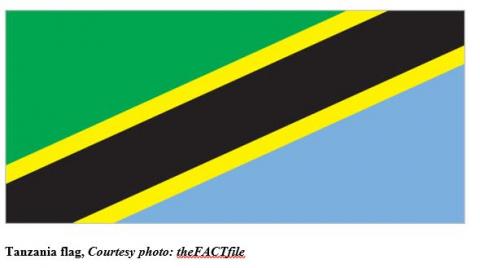HISTORY OF TANZANIA AND PRESS FREEDOM
 Submitted by jbimokola on
Submitted by jbimokola on

Tanzania, officially the United Republic of Tanzania derives from the country's two states, Zanzibar and Tanganyika. Tanganyika was a Germany territory in the 1880s to 1919 when it was handed over to Britain by the League of Nations during World War II in 1947 up to when it got her independence in 1961.
Tanzania was formed after the unification of Tanganyika and Zanzibar in 1964 under the leadership of Julius Kambarage Nyerere the revolutionary who was the first president from 29 October 1964 – 5 November 1985.
Tanzania is a relatively large country in East Africa, it is the 31st largest country in the world and the 13th largest in Africa and it approximately covers 365,000 square miles (945,000 square kilometers) with the country’s official capital Dodoma, located on the mainland and Dar-es Salaam as the largest city and port in the country with the largest Swahili-speaking city in the world.
The current population of the United Republic of Tanzania is 59,016,277. It is neighbored by Rwanda, Burundi and the Democratic Republic of Congo in the west, Uganda and Kenya in the North, Zambia, Malawi and Mozambique in the south and the Indian Ocean in the East. It is surrounded by three great lakes of Africa – Lake Victoria, Lake Tanganyika and Lake Malawi. Vast swathes of Savanah grasslands decorate Tanzania’s hinterlands.
CULTURE
Though Tanzania boasts a rich cultural diversity with different tribes and each ethnic group speaks its own local language, almost all Tanzanians are fluent in the national language which is Swahili. The second official language is English and the media operates in those two main languages.
Tanzania has got about 159 tribes but the most dominant tribes are the Sukuma, the Masaai, the Chagga, the Nyamwezi and the Hadzabe.
ECONOMY
Agriculture is the backbone of Tanzania's economy which accounts for more than half of the Gross Domestic Product (GDP). It provides approximately 75% of exports, and employs approximately 75% of the workforce.
In 2016, Tanzania had over 44 million hectares of arable land with only 33 percent of this amount in cultivation. Almost 70 percent population live in rural areas and are involved in the farming sector. Land is a vital asset in ensuring food security, and among the main food crops in Tanzania are maize, sorghum, millet, rice, wheat, beans, cassava, potatoes, and bananas. Agricultural products also make a large contribution to the country's foreign exchange earnings, with more than US$1 billion in earnings from cash crop exports. The main cash crops are; Coffee, sisal, cashew nuts, tea, cotton and tobacco.
Tanzania has vast amounts of minerals including gold, diamonds, coal, iron, uranium, nickel, chrome, tin, platinum, coltan, niobium, and other minerals. It is the third-largest producer of gold in Africa after South Africa and Ghana. Tanzania is also known for Tanzanite, a type of precious gemstone that is found only in Tanzania.
The nation has many natural resources including minerals, natural gas, and tourism. Extraction of natural gas began in the 2000s. Gas is drawn into the commercial capital, Dar es Salaam and exported to various markets overseas. The mineral sector started to pick-up slowly in the late 90s, on the other hand, the contribution of the tourism sector to the Tanzanian economy is steadily rising year after year.
Tanzania is the home of the world-famous Kilimanjaro the highest mountain in Africa which generate tourism income that plays a vital part in the economy.
Tanzania’s major trading partners include; China, Germany, Japan, India, the European Union, United Arab Emirates, Kenya, Japan, India and South Africa.
Tanzania main exports are tourism, minerals, manufactured goods, crops, fish and fish products, and horticultural products while its imports are represented mostly by transport equipment, machinery, petroleum, fertilizers, industrial raw materials, food and other consumer goods.
- Log in to post comments
- 809 reads
